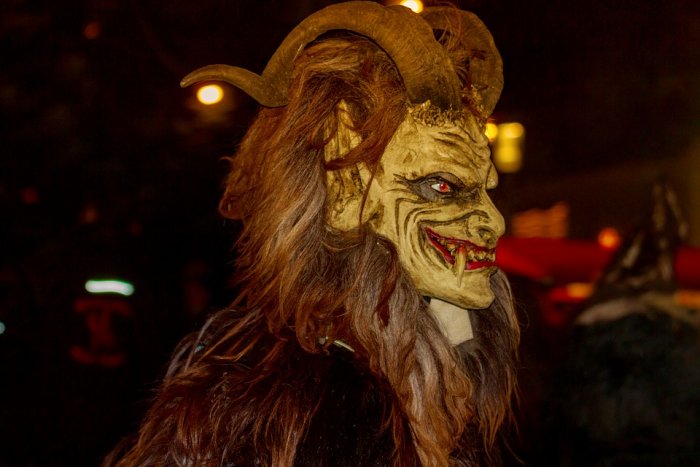Ellen Lloyd - AncientPages.com - Demons are mentioned in myths, legends, folklore and various religions worldwide. Known under a variety of names, demons and other diabolical creatures represent the dark and evil forces. They are often shapeshifters and it’s widely believed they have tormented humanity throughout history.
According to old Hungarian beliefs, a magical tree of life connects the three levels of the world. Various beings reside in these different realms. Sky spirits live in the heavenly sphere, ordinary people have their homes in the middle earth and the lower world, below the ground is inhabited by Chthonic spirits.
Ördög is similar to Krampus. Credit: Public Domain
The Hungarian concept of a world tree reminds of Norse myths and legends that give us elaborate descriptions of the Nine Worlds, which are located in roots and branches of Yggdrasil, a gigantic Universal World Tree.
In Hungarian mythology, Ördög is a shapeshifting demon who controls the evil and dark forces in the world. Looking through the eyes of a Christian, one can say Ördög is the personification of the Devil. The name Ördög translates as “devil” in Hungarian.
Ördög is an evil creature that resides in a horrible and frightening underground world where he collects human souls that nourish him. His realm is similar to the Christian version of hell where sinners are sent.
Once a long time ago, Ördög worked together with God creating the world and humans, but his wicked nature put an end to this heavenly co-operation. Along with rebelling angels, who were also treated as demons, Ördög was forced to take permanent residence in the realm of death, a fiery inferno. Reading his story, one sees striking similarities to the fate of the Watchers, the fallen angels mentioned in the Book of Enoch who were punished by God and cast out of heaven.
Ördög has a double nature and he is not always evil. He can be very polite, gracious and if and when it suits him, even bestow fertility and treasure.
Illustration of the devil from a 14th century Arabic manuscript about evil. Credit: Public Domain
According to the country’s tradition and conception, Hungarian people have always devoured the devil's tales, reshaped them and passed them from word to word. The devil appears in many folk tales and some of these stories come with a powerful message or life-lesson.
See also:
Devil’s Advocate – Ancient Phrase Traced To The Roman Catholic Church
How Sæmundur The Wise Tricked The Devil Three Times
World’s Oldest Fairy Tale – The Smith And The Devil Has Survived For Several Millennia
Why Is Roulette Called The Devil’s Game?
The appearance of Ördög has changed over time due to Christian beliefs. Ördög is believed to be a male humanoid with the upper torso of a human male and lower portions of a goat. Just like depictions of the Christian devil, Ördög has cloven hooves, ram-like horns, a long tail and in one of his hands, he carries a pitchfork.
When first forks started to appear in Tuscany, Italy in the 11th century, there were strong objections from the Church that argued people God had created humans with fingers so they could touch and eat God’s food. The fork was also a suspicious object because it was also associated with the Devil.
In modern depictions, Ördög is in many ways similar to Krampus, who survived in Central European folklore as the malevolent companion of Santa Claus. Depicted as a half-goat, half-demon, Krampus punishes children who have misbehaved.
The origin of Krampus is unclear and it’s possible the figure is based on pre-Christian beliefs and can be traced to Ördög, However, these are just speculations at the moment and but there is no solid evidence Krampus and Ördög are the same creatures.
Written by Ellen Lloyd – AncientPages.com
Copyright © AncientPages.com All rights reserved. This material may not be published, broadcast, rewritten or redistributed in whole or part without the express written permission of AncientPages.com
Expand for references






